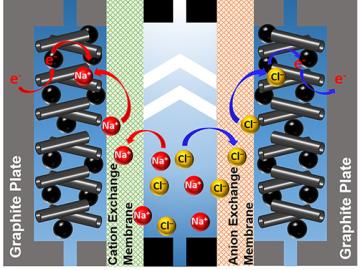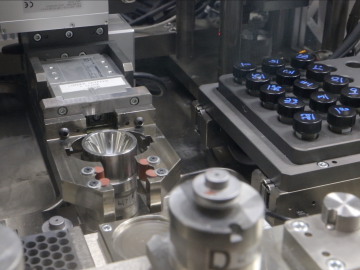
Filter News
Area of Research
- Advanced Manufacturing (2)
- Biology and Environment (10)
- Computational Engineering (2)
- Computer Science (5)
- Electricity and Smart Grid (2)
- Energy Science (34)
- Functional Materials for Energy (1)
- Fusion and Fission (11)
- Fusion Energy (9)
- Isotopes (2)
- Materials (17)
- Materials for Computing (1)
- Mathematics (1)
- National Security (3)
- Neutron Science (4)
- Nuclear Science and Technology (10)
- Nuclear Systems Modeling, Simulation and Validation (1)
- Quantum information Science (1)
- Sensors and Controls (1)
- Supercomputing (10)
News Type
News Topics
- (-) Advanced Reactors (18)
- (-) Clean Water (14)
- (-) Critical Materials (13)
- (-) Fusion (19)
- (-) Grid (28)
- (-) Machine Learning (19)
- (-) Molten Salt (6)
- (-) Space Exploration (11)
- 3-D Printing/Advanced Manufacturing (57)
- Artificial Intelligence (33)
- Big Data (26)
- Bioenergy (26)
- Biology (31)
- Biomedical (18)
- Biotechnology (6)
- Buildings (31)
- Chemical Sciences (31)
- Composites (16)
- Computer Science (70)
- Coronavirus (15)
- Cybersecurity (9)
- Emergency (2)
- Energy Storage (50)
- Environment (67)
- Exascale Computing (11)
- Fossil Energy (1)
- Frontier (10)
- High-Performance Computing (33)
- Hydropower (6)
- Irradiation (3)
- Isotopes (15)
- ITER (5)
- Materials (70)
- Materials Science (54)
- Mathematics (3)
- Mercury (3)
- Microscopy (21)
- Nanotechnology (25)
- National Security (13)
- Neutron Science (42)
- Nuclear Energy (36)
- Partnerships (11)
- Physics (11)
- Polymers (15)
- Quantum Computing (9)
- Quantum Science (17)
- Security (4)
- Simulation (16)
- Software (1)
- Statistics (1)
- Summit (11)
- Transportation (52)
Media Contacts

Scientists at Oak Ridge National Laboratory have developed a low-cost, printed, flexible sensor that can wrap around power cables to precisely monitor electrical loads from household appliances to support grid operations.

A team of scientists led by Oak Ridge National Laboratory used carbon nanotubes to improve a desalination process that attracts and removes ionic compounds such as salt from water using charged electrodes.

Gleaning valuable data from social platforms such as Twitter—particularly to map out critical location information during emergencies— has become more effective and efficient thanks to Oak Ridge National Laboratory.

Scientists have tested a novel heat-shielding graphite foam, originally created at Oak Ridge National Laboratory, at Germany’s Wendelstein 7-X stellarator with promising results for use in plasma-facing components of fusion reactors.

Oak Ridge National Laboratory scientists analyzed more than 50 years of data showing puzzlingly inconsistent trends about corrosion of structural alloys in molten salts and found one factor mattered most—salt purity.

By automating the production of neptunium oxide-aluminum pellets, Oak Ridge National Laboratory scientists have eliminated a key bottleneck when producing plutonium-238 used by NASA to fuel deep space exploration.

Scientists from Oak Ridge National Laboratory performed a corrosion test in a neutron radiation field to support the continued development of molten salt reactors.

Oak Ridge National Laboratory scientists have devised a method to control the heating and cooling systems of a large network of buildings for power grid stability—all while ensuring the comfort of occupants.

Scientists from the Critical Materials Institute used the Titan supercomputer and Eos computing cluster at ORNL to analyze designer molecules that could increase the yield of rare earth elements found in bastnaesite, an important mineral

Experts focused on the future of nuclear technology will gather at Oak Ridge National Laboratory for the fourth annual Molten Salt Reactor Workshop on October 3–4.


